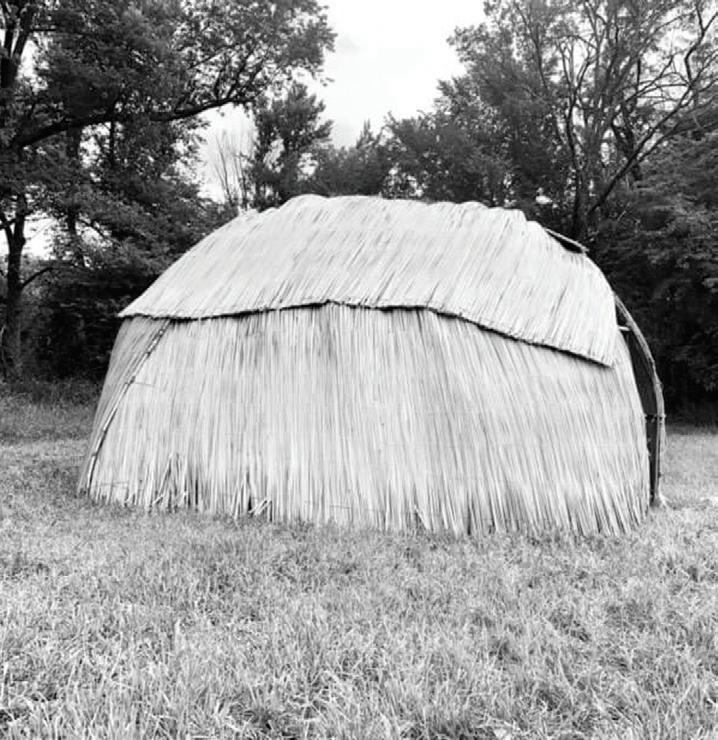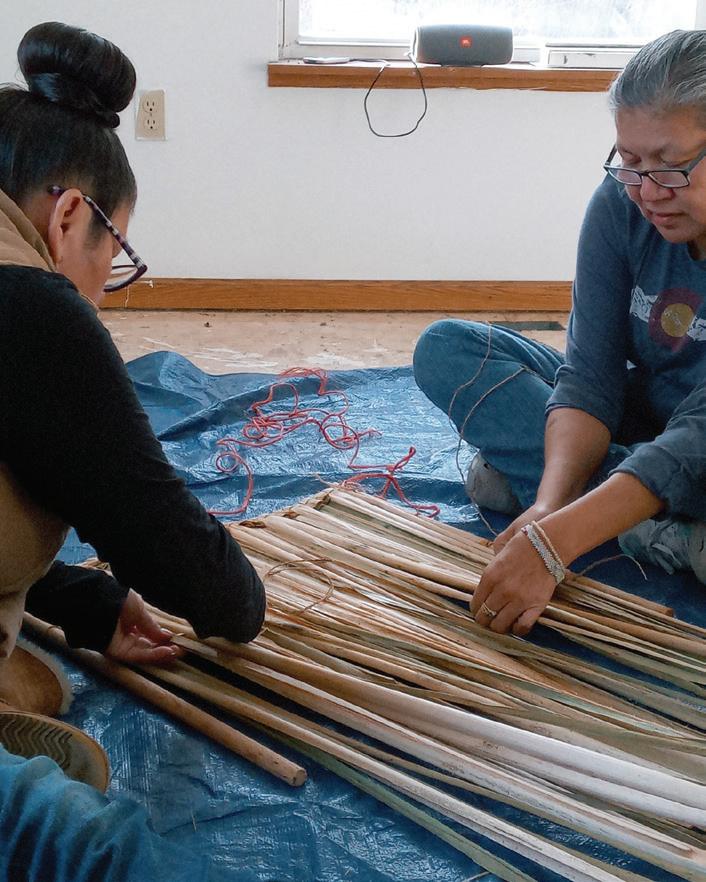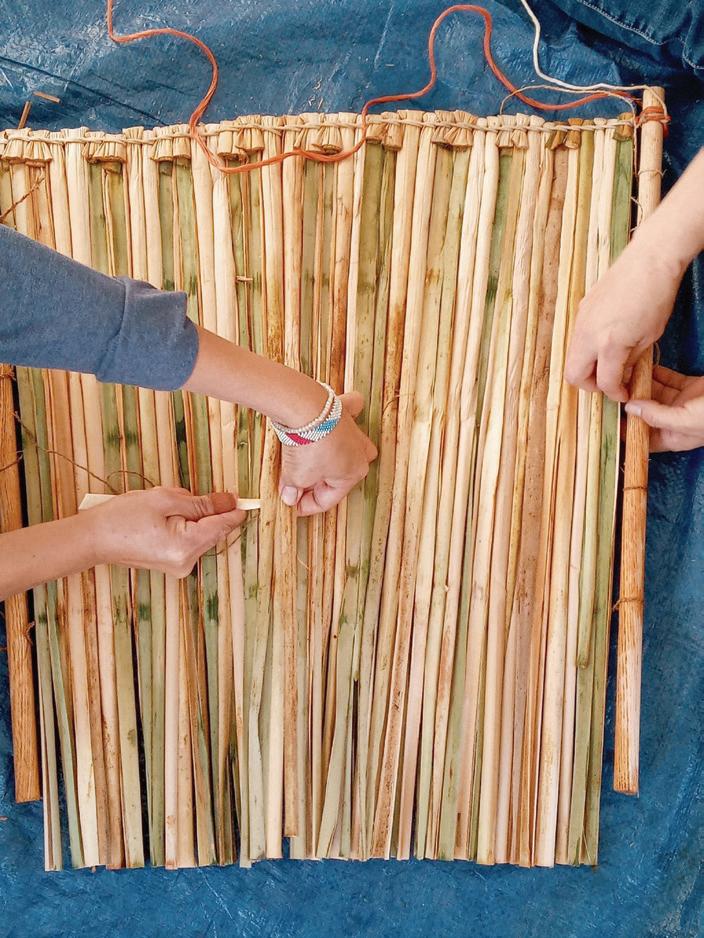
2 minute read
of
Meskwaki Cattail and Bulrush Weaving: “Coming Home”
By Mary Young Bear
Advertisement
a s i write this on a very chilly October morning on the Meskwaki Settlement in Tama, Iowa, I am also preparing to attend an Indigenous conference on tribal libraries and museums. I reflect on this journey of revitalizing a long-forgotten Meskwaki tradition and all of the people who have participated by my side. As I think back to how we began this journey, it feels like circumstance, but I believe it was simply time for the cattails and bulrushes to come home to our community.
The art of weaving cattails into panels that protected our Meskwaki winter homes is something that all women knew how to do—much like cooking and harvesting local plants and crops for food and medicines. However, approximately 50–60 years ago, we simply stopped making the cattail mats; we also stopped making bulrush mats, and there is no documentation as to why this happened. Nobody documented this change or mentioned this in our history. We do have old pictures, and there are some bulrush mats in museum collections. But almost nothing remained in our community to remind my generation of their existence.
Two events occurred simultaneously in our community by coincidence and are related by chance. First, the Meskwaki Cultural Center & Museum was hosting a series of traditional-arts classes, and one class was weaving bags with plant fibers. The other event was an opportunity for community members to help harvest cattails with members of the image abo V e: LeAnn Morgan & Nina Young Bear, members of the weekly weaving group, at work weaving the mats for the August powwow. Photo by Kristina Young Bear. Reproduced with permission. image below: The weavers use bone needles to weave the cattails together. Photo by Kristina Young Bear. Reproduced with permission. image le F t: The traditional, mat-covered wikiup built for the powwow. Photo by Tashina Azure-Mitchell, Azure Sky Photography. Reproduced with permission.
Kickapoo tribe in Oklahoma. It was during my time on this trip that I was introduced to both harvesting cattails and seeing an actual traditional mat-covered home.
The Kickapoo traditional home in Oklahoma was similar to the traditional homes (wikiups) of the Meskwaki people that I had seen in old pictures. When Kickapoo women allowed us to assist with their harvest, they also let us bring cattails back to Tama, and, about a month later, they came to the Meskwaki community to show us how to make a cattail mat. Some of the women from our Meskwaki community who participated in the cattail mat-weaving session that weekend remain dedicated learners even now.
While learning cattail mat weaving hasn’t been easy, our group remains dedicated to retaining the methods, traditions, and protocols associated with this traditional art. We will continue to gather every week to weave and to maintain our traditional practices while bringing younger women into our project.


It is this dedication and tenacity that made it possible for the first time in 50–60 years for an old-style Meskwaki wikiup to grace our grassy powwow grounds in August of this year. The women of our weaving group made a decision to build a cattail mat-covered wikiup on the Meskwaki Powwow grounds that would stand for the duration of our annual event. With no fanfare, our cattail mat-covered wikiup stood alone throughout the four days of the powwow for our community to view and enjoy. Local photographer, Tashina Azure created an opportunity to use the wikiup as a background for local dancers to have their photographs taken, and the results were amazing. Through this learning process, our weaving group has grown closer, and we have developed a deeper respect for the Meskwaki women of the past. Cattail mat-weaving, bulrush mat-weaving and bone needle-making have come home to the Meskwaki community, and we will continue on our journey to make these traditional arts a permanent part of contemporary Meskwaki culture.




